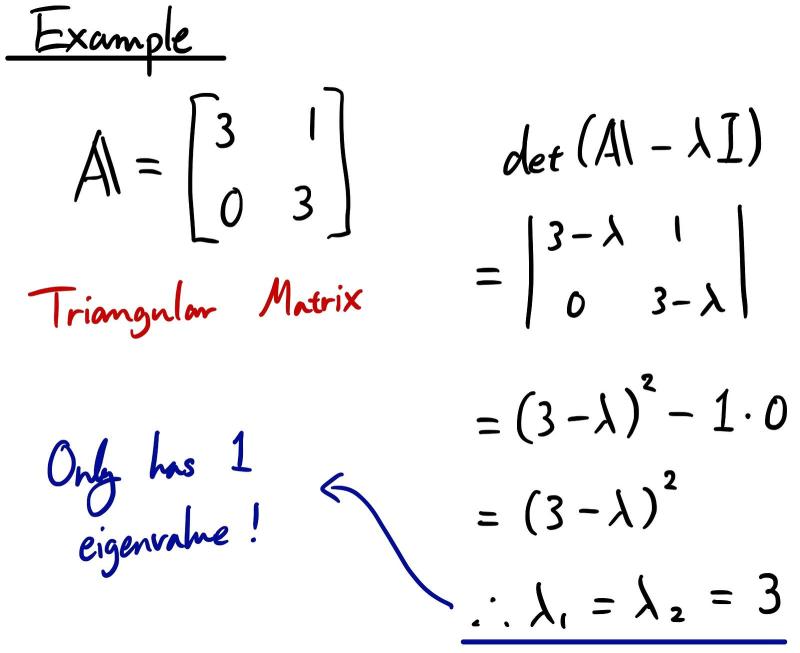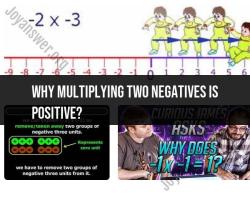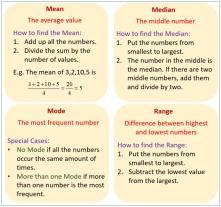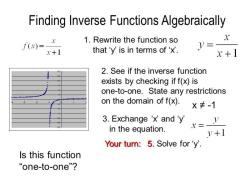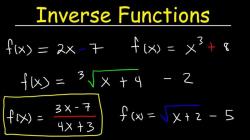How to find eigenvectors?
Finding eigenvectors is an important part of eigenanalysis, a process that involves calculating the eigenvalues and eigenvectors of a square matrix. Here's a step-by-step guide on how to find eigenvectors:
1. Understand the Basics:
- An eigenvector of a square matrix is a non-zero vector such that , where is the corresponding eigenvalue.
2. Find Eigenvalues:
- Before finding eigenvectors, you need to find the eigenvalues of the matrix. This involves solving the characteristic equation , where is the identity matrix.
Example:If is a 2x2 matrix:
3. Solve for Eigenvalues:
- Solve the characteristic equation to find the eigenvalues (). These eigenvalues will be used to find the corresponding eigenvectors.
4. Substitute Eigenvalues:
- For each eigenvalue , substitute it back into the equation , where is the original matrix.
Example:If is a 2x2 matrix and is an eigenvalue:
5. Solve Homogeneous System of Equations:
- The equation represents a homogeneous system of linear equations. Solve this system to find the eigenvector corresponding to the eigenvalue .
6. Matrix Reduction (Optional):
- You may use techniques like Gaussian elimination or row reduction to simplify the system of equations and make it easier to solve.
7. Normalize the Eigenvector (Optional):
- Eigenvectors are often normalized (scaled to have a magnitude of 1). To normalize an eigenvector, divide each component by the magnitude of the eigenvector.
8. Repeat for Other Eigenvalues:
- Repeat steps 4-7 for each eigenvalue to find all corresponding eigenvectors.
9. Check the Results:
- Verify that the obtained vectors are indeed eigenvectors by multiplying them with the original matrix and confirming that the result is a scalar multiple of the original vector.
Example:
Let's say you have a 2x2 matrix with eigenvalues and . The corresponding eigenvectors and can be found by solving the systems of equations and .
The general process remains the same for larger matrices; however, the calculations become more complex.
Keep in mind that there are numerical methods and software tools that can automate the process of finding eigenvectors for larger matrices.
1. Methods or Techniques for Finding Eigenvectors in Linear Algebra
There are several methods for finding eigenvectors in linear algebra, each with its own advantages and limitations. Some of the most common methods include:
Power Method: The power method is an iterative method that involves repeatedly multiplying a vector by a matrix and normalizing the result. The resulting sequence of vectors will converge to an eigenvector of the matrix.
QR Decomposition: QR decomposition is a factorization technique that can be used to find both eigenvalues and eigenvectors of a matrix. The QR decomposition involves factoring a matrix into a product of an orthogonal matrix and an upper triangular matrix. The eigenvalues are found on the diagonal of the upper triangular matrix, and the eigenvectors are the columns of the orthogonal matrix.
Singular Value Decomposition (SVD): SVD is a factorization technique that can be used to find eigenvalues and eigenvectors of real and complex matrices. The SVD involves factoring a matrix into a product of three matrices: a diagonal matrix containing the singular values (which are related to the eigenvalues), an orthogonal matrix, and another orthogonal matrix.
2. Relationship Between Eigenvalues and Eigenvectors in Matrix Operations
Eigenvalues and eigenvectors have a special relationship to matrix operations. When a matrix is multiplied by its eigenvector, the result is a scalar multiple of the eigenvector. This relationship is expressed mathematically as:
Ax = λx
where A is the matrix, x is the eigenvector, and λ is the eigenvalue.
This relationship can be used to understand a number of important properties of matrices, such as their stability and their ability to represent transformations in space.
3. Computational Tools and Algorithms for Calculating Eigenvectors
There are a number of computational tools and algorithms available for calculating eigenvectors. Some of the most popular tools include:
MATLAB: MATLAB is a mathematical programming language that includes a number of built-in functions for calculating eigenvalues and eigenvectors.
NumPy: NumPy is a Python library for numerical computing that includes a number of functions for calculating eigenvalues and eigenvectors.
SciPy: SciPy is a Python library for scientific computing that includes a number of functions for calculating eigenvalues and eigenvectors.
Eigen: Eigen is a C++ library for numerical linear algebra that includes a number of functions for calculating eigenvalues and eigenvectors.
In addition to these general-purpose tools, there are also a number of specialized algorithms for calculating eigenvalues and eigenvectors in specific applications. For example, there are algorithms for calculating eigenvalues and eigenvectors of sparse matrices, large matrices, and matrices with complex entries.
